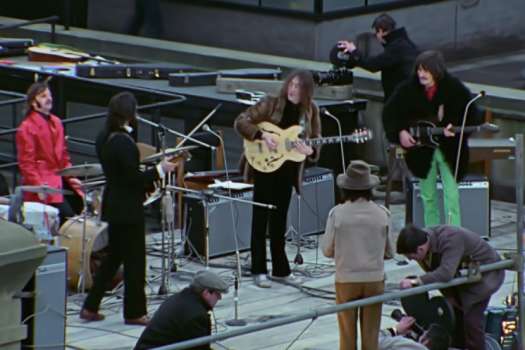The title is not simply a reference to the south Rio de Janeiro neighbourhood, but also of moving beyond Astrid Gilberto's world-famous version of "The Girl From Ipanema." Subtitled "Brazilian Waves in Global Music," Beyond Ipanema is a look at the resurgence of Brazilian music in culture through the last 60 years. Director Guto Barra does little more than simply celebrate the love and influence of the acts, as gushed by hipster faves like M.I.A. and Devendra Banhart.
Barra focuses on several major Brazilian musical movements, through the '40s to the present, including the psychedelia-infused Tropicália and the jazz-based bossa nova. The introductory segment on Hollywood's first Brazilian success, Carmen Miranda, is particularly fascinating. Forgotten as little more than a punch line for her fruit hats, Miranda's rapid-fire Portuguese singing is still captivating, and is reflected in her success (as of 1945, Miranda was the highest-paid woman in Hollywood). However, the mood remains static.
One wishes Barra expanded more on the cultural climate surrounding Brazil through the many turbulent times of the country. Little is said about the military dictatorship inspiring the '60s Tropicália sound; the streets from which Seu Jorge (the acoustic, Brazilian, Bowie cover troubadour made famous from The Life Aquatic) gradually emerged; or the breakdown of experimental Tropicália pioneer Tom Zé.
Zé, in particular, is a crucial link to exposing Western audiences to the expanses of Brazilian music. The film's biggest selling point is the music, with eclectic and ecstatic sounds emerging from every scene. However truncated the live performance segments may be, an incredible wealth of musicians are still waiting to be discovered by new audiences. Beyond Ipanema isn't nearly as revolutionary as the music contained within, but may certainly jumpstart a vibrant record collection.
(FiGa)Barra focuses on several major Brazilian musical movements, through the '40s to the present, including the psychedelia-infused Tropicália and the jazz-based bossa nova. The introductory segment on Hollywood's first Brazilian success, Carmen Miranda, is particularly fascinating. Forgotten as little more than a punch line for her fruit hats, Miranda's rapid-fire Portuguese singing is still captivating, and is reflected in her success (as of 1945, Miranda was the highest-paid woman in Hollywood). However, the mood remains static.
One wishes Barra expanded more on the cultural climate surrounding Brazil through the many turbulent times of the country. Little is said about the military dictatorship inspiring the '60s Tropicália sound; the streets from which Seu Jorge (the acoustic, Brazilian, Bowie cover troubadour made famous from The Life Aquatic) gradually emerged; or the breakdown of experimental Tropicália pioneer Tom Zé.
Zé, in particular, is a crucial link to exposing Western audiences to the expanses of Brazilian music. The film's biggest selling point is the music, with eclectic and ecstatic sounds emerging from every scene. However truncated the live performance segments may be, an incredible wealth of musicians are still waiting to be discovered by new audiences. Beyond Ipanema isn't nearly as revolutionary as the music contained within, but may certainly jumpstart a vibrant record collection.




